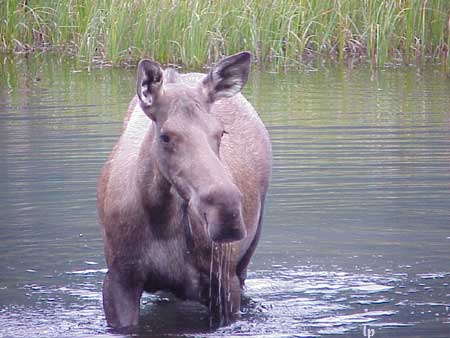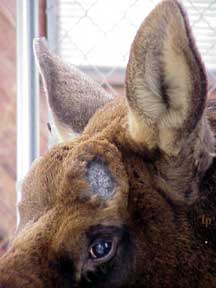|

|
|
||||||||||||||||||||||||||||||||||||||||||||||||||||||||||||||||||||||||||||||||||||||||||
Moose are dangerousColliding with a moose on the highway can be fatal for both moose and motorist, but a close encounter on foot can be fatal, too. A pedestrian on the University of Alaska Anchorage campus was attacked and killed by a cow moose a few years ago when he walked between it and its calf. Cow moose often are accompanied by one or two calves and it is extremely dangerous to get between them. If you encounter one moose, look around to see if others are nearby. Moose usually ignore people who keep a respectful distance, but they could charge, and an attack could cause serious injury or death. Photographers are advised to use long lenses and/or have an escape route in mind. If a moose stops feeding, if its ears perk up, if it seems nervous, it's time to back off. Don't get close to a moose just because other people are; they may not know any better. If you encounter a freshly killed moose carcass on or near a path, move away from it as quickly as possible. There's a strong possibility that a grizzly bear is nearby.
|
 Hundreds
of them are to be found within the Anchorage city limits, especially
during the winter when city yards and greenbelts offer better
forage than can be found on the snowcovered mountain slopes.
Moose are also safer in the city from grizzly bears, though
an occasional grizzly bear has been known to wander into town,
too.
Hundreds
of them are to be found within the Anchorage city limits, especially
during the winter when city yards and greenbelts offer better
forage than can be found on the snowcovered mountain slopes.
Moose are also safer in the city from grizzly bears, though
an occasional grizzly bear has been known to wander into town,
too.